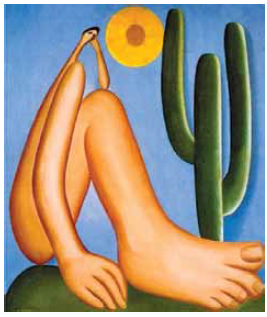Leia o texto para responder à questão.
Worshiping the false idols of wellness
Before we go further, I’d like to clear something up:
wellness is not the same as medicine. Medicine is the science
of reducing death and disease, and increasing long and
healthy lives. Wellness used to mean a blend of health and
happiness. Something that made you feel good or brought
joy and was not medically harmful — perhaps a massage or
a walk along the beach. But it has become a false antidote to
the fear of modern life and death.
The wellness industry takes medical terminology, such as
“inflammation” or “free radicals,” and polishes it to the point of
incomprehension. The resulting product is a “Do It Yourself”
medicine for longevity that comes with a confidence that
science can only aspire to achieve.
Let’s take the trend of adding a pinch of activated charcoal
to your food or drink. While the black color is strikingly
unexpected and alluring, it’s sold as a supposed “detox.”
Guess what? It has the same efficacy as a spell from the local
witch. Maybe it’s a matter of aesthetics. Wellness potions in
beautiful jars with untested ingredients of unknown purity are
practically packaged for Instagram.
Medicine and religion have long been deeply intertwined,
and it’s only relatively recently that they have separated.
The wellness-industrial complex seeks to resurrect that
connection. It’s like a medical throwback, as if the idyllic days
of health were 5,000 years ago. Ancient cleansing rituals
with a modern twist — supplements, useless products and
scientifically unsupported tests.
The dietary supplements that are the backbone of
wellness make up a $30 billion a year business despite studies
showing they have no value for longevity (only a few vitamins
have proven medical benefits, like folic acid before and during
pregnancy and vitamin D for older people at risk of falling).
Modern medicine wants you to get your micronutrients from
your diet, which is inarguably the most natural source.
Yet the wellness-industrial complex has managed to
pervert that narrative and make supplements a necessary tool
for nonsensical practices, such as boosting the immune system
or fighting the war on inflammation. The resulting fluorescent
yellow urine from multivitamins may provide a false sense of
efficacy, but it’s a fool’s gold (and the consequence of excessive
B2 that couldn’t possibly be absorbed). So what’s the harm of
spending money on charcoal for non-existent toxins or vitamins
for expensive urine? Here’s what: the placebo effect or “trying
something natural” can lead people with serious illnesses to
postpone effective medical care. However, I admit that doctors
can learn something from wellness. It’s clear that some people
are looking for healers, so we must find ways to serve that need
that are medically ethical.
(Jen Gunter. www.nytimes.com, 01.08.2018. Adaptado.)










